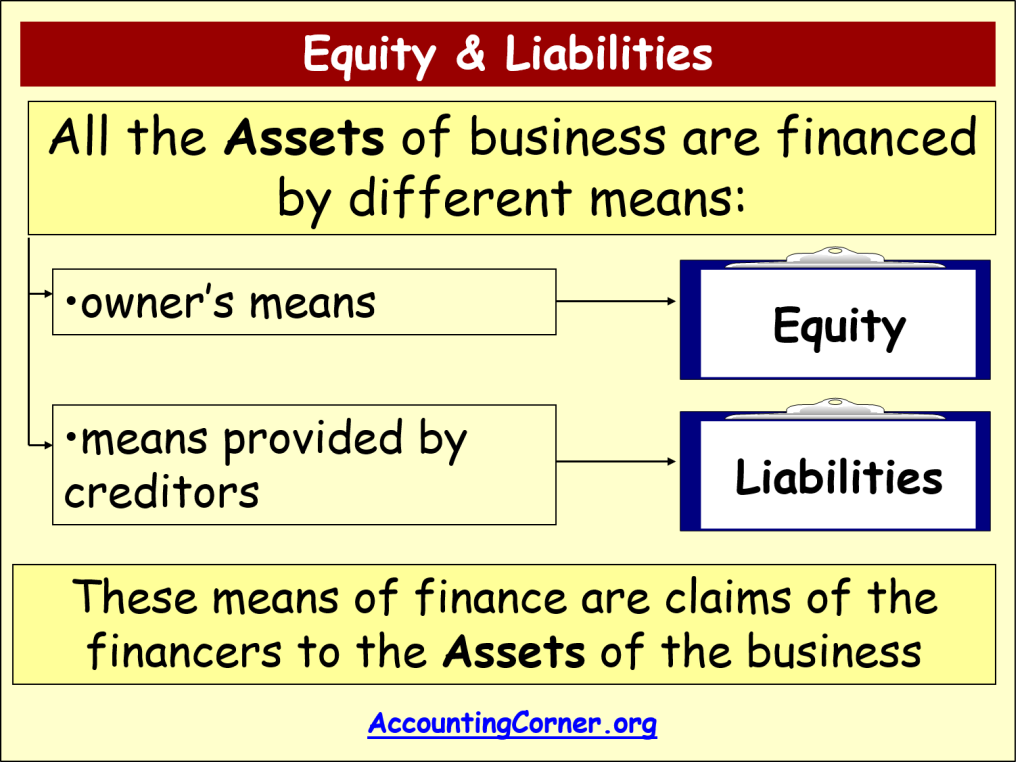What Is The Accounting Equation And Why Does It Work? Finance Courses, Investing Courses

On 22 January, Sam Enterprises pays $9,500 cash to creditors and receives a cash discount of $500. On 1 January 2016, Sam started a trading business called Sam Enterprises with an initial investment of $100,000. Before taking this lesson, be sure to be familiar with the accounting elements. Shaun Conrad is a Certified Public Accountant and CPA exam expert with a passion for teaching. After almost a decade of experience in public accounting, he created MyAccountingCourse.com to help people learn accounting & finance, pass the CPA exam, and start their career.
Expanding Equity Within the Accounting Equation

Before technological advances came along for these growing businesses, bookkeepers were forced to manually manage their accounting (when single-entry accounting was the norm). Of course, this lead to the chance of human error, which is detrimental to a company’s health, balance sheets, and investor ability. The accounting equation is so fundamental to accounting that it’s often the first concept taught in entry-level courses. It offers a quick, no-frills answer to keeping your assets versus liabilities in balance. Liabilities are claims on the company assets by other companies or people. In other words, it’s the amount of money owed to other people.
What is the approximate value of your cash savings and other investments?
Obligations owed to other companies and people are considered liabilities and can be categorized as current and long-term liabilities. So, let’s take a look at every element of the accounting equation. This transaction brings cash into the business and also creates a new liability called bank loan. On the other side of the equation, a liability (i.e., accounts payable) is created. Creditors have preferential rights over the assets of the business, and so it is appropriate to place liabilities before the capital or owner’s equity in the equation. The business has paid $250 cash (asset) to repay some of the loan (liability) resulting in both the cash and loan liability reducing by $250.
Let us take a look at transaction #1:
The following illustration for Edelweiss Corporation shows a variety of assets that are reported at a total of $895,000. Creditors are owed $175,000, leaving $720,000 of stockholders’ equity. If a company keeps accurate records using the double-entry system, the accounting equation will always be “in balance,” meaning xero certification for accountants and bookkeepers the left side of the equation will be equal to the right side. The balance is maintained because every business transaction affects at least two of a company’s accounts. For example, when a company borrows money from a bank, the company’s assets will increase and its liabilities will increase by the same amount.
- These may include loans, accounts payable, mortgages, deferred revenues, bond issues, warranties, and accrued expenses.
- A trade receivable (asset) will be recorded to represent Anushka’s right to receive $400 of cash from the customer in the future.
- It offers a quick, no-frills answer to keeping your assets versus liabilities in balance.
- They were acquired by borrowing money from lenders, receiving cash from owners and shareholders or offering goods or services.
For the past 52 years, Harold Averkamp (CPA, MBA) has worked as an accounting supervisor, manager, consultant, university instructor, and innovator in teaching accounting online. Debt is a liability, whether it is a long-term loan or a bill that is due to be paid. Joe sets up a company (Joe Ltd) and invests £1,000 into the business.
How confident are you in your long term financial plan?
Said a different way, liabilities are creditors’ claims on company assets because this is the amount of assets creditors would own if the company liquidated. As you can see, assets equal the sum of liabilities and owner’s equity. This makes sense when you think about it because liabilities and equity are essentially just sources of funding for companies to purchase assets.
All assets owned by a business are acquired with the funds supplied either by creditors or by owner(s). In other words, we can say that the value of assets in a business is always equal to the sum of the value of liabilities and owner’s equity. The total dollar amounts of two sides of accounting equation are always equal because they represent two different views of the same thing. Does the stockholders’ equity total mean the business is worth $720,000? For example, although the land cost $125,000, Edelweiss Corporation’s balance sheet does not report its current worth. Similarly, the business may have unrecorded resources, such as a trade secret or a brand name that allows it to earn extraordinary profits.
In the accounting equation, every transaction will have a debit and credit entry, and the total debits (left side) will equal the total credits (right side). In other words, the accounting equation will always be “in balance”. As expected, the sum of liabilities and equity is equal to $9350, matching the total value of assets. So, as long as you account for everything correctly, the accounting equation will always balance no matter how many transactions are involved. The accounting equation’s left side represents everything a business has (assets), and the right side shows what a business owes to creditors and owners (liabilities and equity). A company’s quarterly and annual reports are basically derived directly from the accounting equations used in bookkeeping practices.
